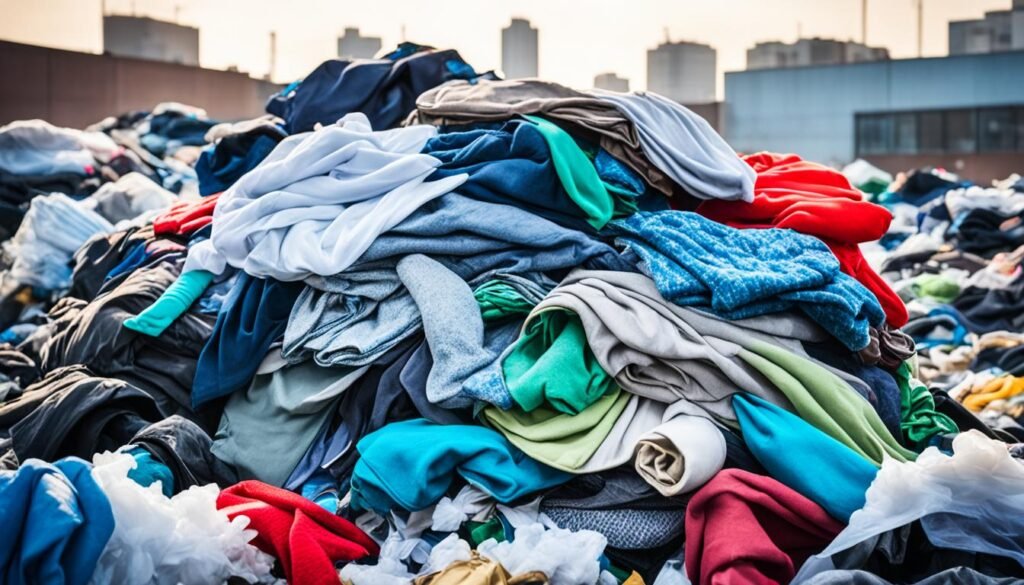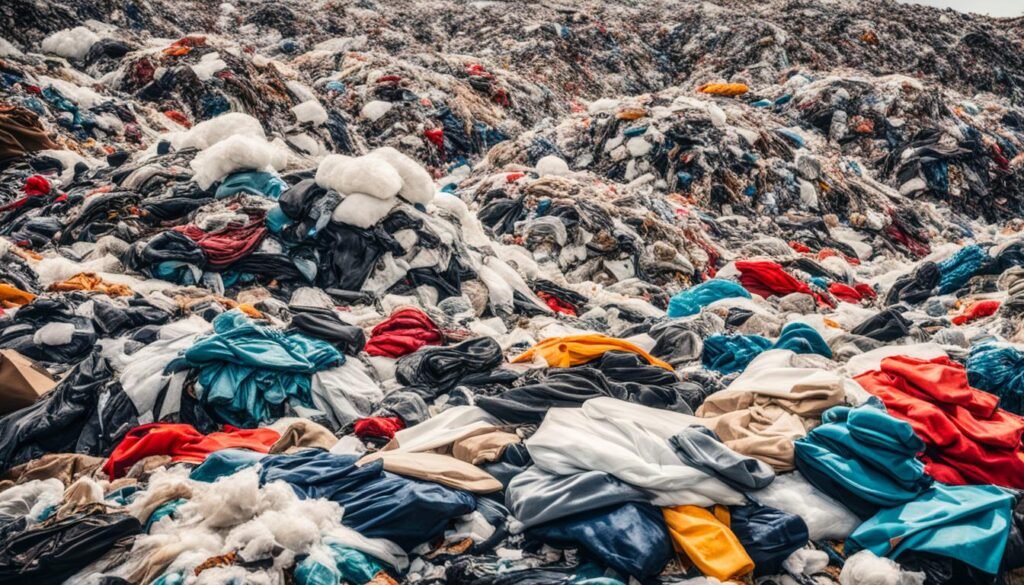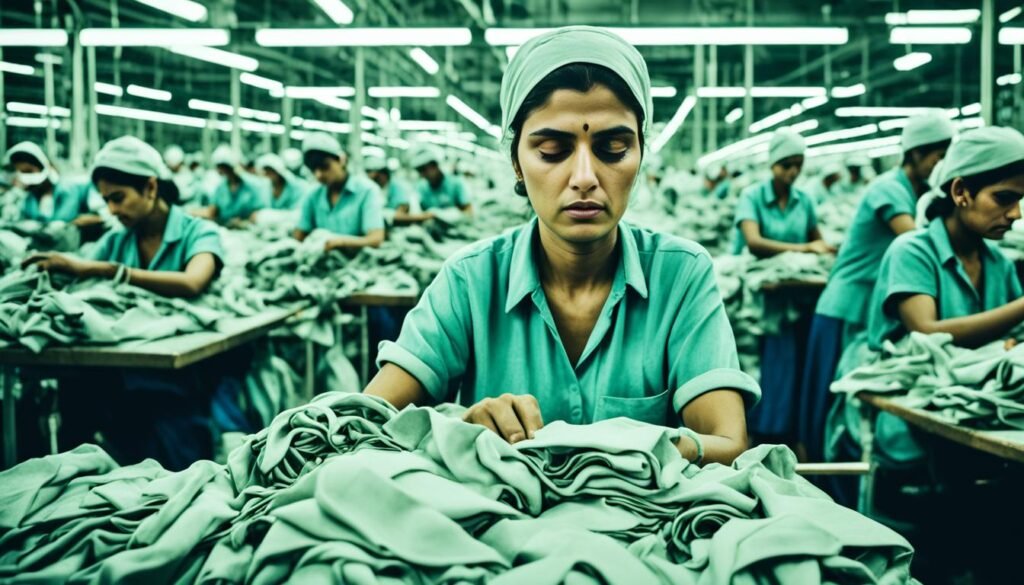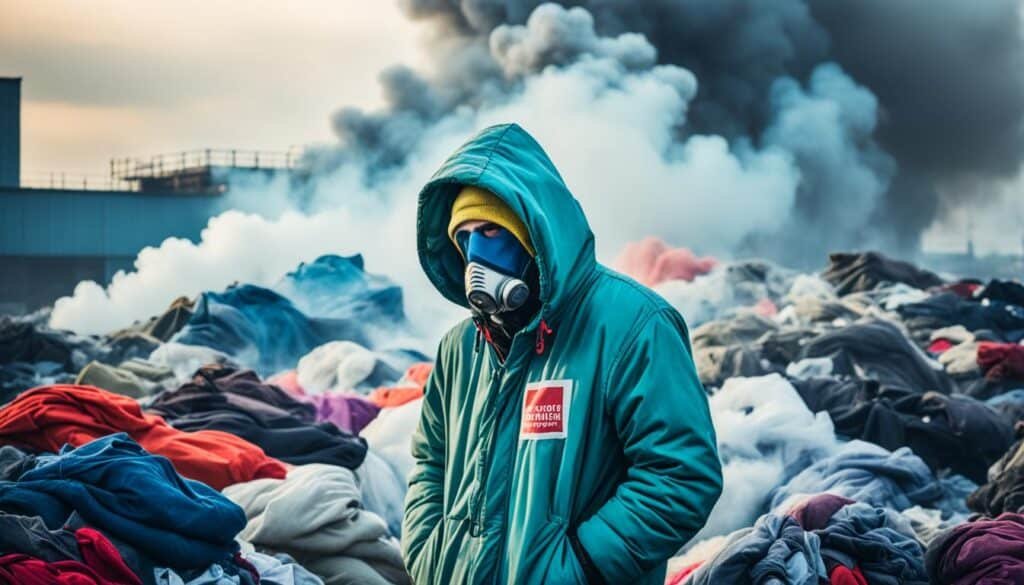Shopping Fast Fashion : The fashion industry has undergone a dramatic transformation in recent decades, with the rise of fast fashion fundamentally altering the way we shop and consume clothing. While the fast fashion model has made fashion brands and fashion retailers more accessible and affordable, it has also come at a significant cost to the environment and society. This comprehensive analysis delves into the critical issues and pitfalls associated with the fast fashion industry, shining a light on the unsustainable cycle of mass production and consumption that has become the hallmark of our modern clothing industry.
From the environmental impact of textile production and textile dyeing to the social and environmental consequences of labor exploitation and low wages in the global supply chain, the fast fashion industry has left a devastating mark on our planet and its people. This article will explore these critical issues in-depth, providing a comprehensive understanding of the true cost of cheap clothing and the urgent need for a shift toward more sustainable fashion and ethical fashion practices.
Key Takeaways
- The rapid growth of the fast fashion industry has led to an unsustainable cycle of mass production and consumption, with significant environmental and social consequences.
- The environmental impact of fast fashion includes a large carbon footprint, water pollution, and massive textile waste.
- The social consequences of fast fashion involve the exploitation of garment workers, including labor exploitation and poor working conditions.
- Consumers play a crucial role in driving change by adopting more conscious shopping habits and supporting ethical and sustainable brands.
- Governments and industry leaders must take decisive action through legislation, regulations, and sustainability initiatives to address the pressing issues within the fashion industry.
The Rise of Fast Fashion
The fashion industry has undergone a dramatic transformation in recent decades, with the rise of the fast fashion business model. This model is characterized by its ability to quickly and affordably bring new clothing designs to the market, capitalizing on the ever-changing desires of fashion-conscious consumers.
Defining Fast Fashion
Fast fashion refers to the strategy employed by fashion brands and fashion retailers to rapidly produce and distribute low-cost, trendy clothing in response to the latest fashion trends. This rapid production and consumption cycle has transformed the fashion industry, allowing consumers to purchase new clothes more frequently than ever before.
Rapid Production and Consumption Cycle
Fast fashion companies have pioneered a business model that enables them to bring garments from the design stage to store shelves in as little as 15 days, a fraction of the time it takes for traditional fashion houses. This accelerated process has led to a culture of overconsumption, where shopping for clothes has become a regular, almost compulsive activity for many consumers.
Affordability and Accessibility
One of the key drivers behind the rise of fast fashion is its affordability and accessibility. Fast fashion brands and retailers are able to offer trendy clothing at lower prices, making it accessible to a wider range of consumers. This has democratized fashion, allowing more people to participate in the global fashion industry and express their style through new clothes.
Environmental Impact of Fast Fashion
The fast fashion industry’s relentless pursuit of rapid production and consumption has taken a significant toll on the environment. As the demand for affordable, trendy clothing continues to soar, the industry’s carbon footprint and greenhouse gas emissions have skyrocketed, contributing significantly to climate change. The textile industry, a major component of the fast fashion ecosystem, is a significant source of greenhouse gas emissions, with production processes often relying on fossil fuels and energy-intensive methods.
Carbon Footprint and Greenhouse Gas Emissions
The fashion industry, including the fast fashion sector, is responsible for an estimated 10% of global carbon emissions, a figure that is expected to rise as the industry expands. The production, transportation, and disposal of clothing and textiles all contribute to this staggering environmental impact. From the cultivation of raw materials like cotton to the energy-intensive dyeing and finishing processes, the fashion industry’s reliance on fossil fuels and energy-intensive manufacturing methods has led to a substantial carbon footprint that is difficult to ignore.
Water Pollution and Textile Waste
In addition to its carbon impact, the fast fashion industry is a major contributor to water pollution and textile waste. The textile dyeing and finishing processes often involve the use of hazardous chemicals and dyes that are released into waterways, contaminating local ecosystems and water sources. This global environmental injustice disproportionately affects developing countries, where many fast fashion production facilities are located. Furthermore, the industry’s rapid production and consumption cycle has led to an overwhelming amount of textile waste, with a significant portion of discarded clothing and textiles ending up in landfills or illegally dumped, further exacerbating the environmental damage.

Shopping Fast Fashion
The rapid growth of the fast fashion industry has led to a culture of overconsumption, where shopping for clothes has become a frequent and often unnecessary activity. Consumers are bombarded with a constant stream of new clothing options, fueling the desire to constantly update their wardrobes.
On average, Americans purchase approximately 80 pounds of clothing and textiles annually, with much of this ending up in landfills or incinerators. This staggering amount of textile waste not only damages the environment but also contributes to the global crisis of overproduction and overconsumption.
Overconsumption and Textile Waste
The fast fashion industry’s business model is designed to encourage consumers to constantly buy new clothes, with some garments taking only 15 days to go from the design stage to being sold in stores. This rapid production and consumption cycle has led to billions of pieces of new clothing being purchased each year, with much of it being discarded shortly after. In fact, the average American throws away approximately 80 pounds of clothing and textiles annually, contributing to the 92 million tons of textile waste generated globally each year.
Greenwashing and Misleading Sustainability Claims
Amidst growing consumer awareness of the environmental and social impacts of fast fashion, some brands have attempted to greenwash their practices by making misleading sustainability claims. These claims often fail to address the root causes of the industry’s problems, such as the reliance on fossil fuels, water pollution, and labor exploitation. Consumers must be vigilant in scrutinizing the sustainability claims made by fast fashion brands and seek out transparent, ethical, and sustainable alternatives.
| Metric | Fast Fashion Impact | Sustainable Fashion Impact |
|---|---|---|
| Carbon Footprint | Fast fashion contributes to approximately 10% of global carbon emissions, derived from fossil fuels used in textile production and transportation. | Sustainable fashion, with its focus on renewable materials and closed-loop systems, can reduce carbon emissions by up to 58% compared to traditional fast fashion. |
| Water Consumption | The fast fashion industry consumes 93 billion cubic meters of water annually, enough to meet the needs of five million people defined by the United Nations. | Sustainable fashion can reduce water consumption by up to 45% through the use of water-efficient materials and dyeing processes. |
| Textile Waste | Fast fashion contributes to the production of 92 million tons of textile waste each year, with much of it ending up in landfills or being incinerated. | Sustainable fashion promotes circularity, recycling, and the use of biodegradable materials, reducing textile waste by up to 75%. |

Social Consequences of Fast Fashion
The rapid growth of the global fashion industry has not only taken a toll on the environment, but it has also had significant social consequences, particularly for the garment workers toiling in the complex supply chains of fast fashion brands. The pursuit of low-cost production and lightning-fast turnaround times has often led to the exploitation of labor and poor working conditions in many garment factories.
Labor Exploitation and Poor Working Conditions
In the race to meet the insatiable demand for new clothing, fast fashion companies frequently source their products from developing countries where labor laws and worker protections are lax. This has resulted in the widespread exploitation of garment workers, who often face long hours, low wages, and hazardous working environments. The tragic Rana Plaza disaster in Bangladesh, where over 1,100 workers were killed in a building collapse, served as a devastating reminder of the safety issues plaguing the textile and garment industry.
Human Rights Violations in Supply Chains
The global fashion industry’s complex and opaque supply chains have also enabled human rights violations, including forced labor, child labor, and gender-based discrimination. Many workers in fast fashion factories, particularly women, face unsafe working conditions, long hours, and low wages that trap them in a cycle of poverty. As the fast fashion business model continues to prioritize speed and cost-cutting over social and environmental considerations, the exploitation of vulnerable populations remains a persistent issue in the fashion and sustainability landscape.

| Issue | Impact |
|---|---|
| Labor Exploitation | Garment workers in fast fashion supply chains often face long hours, low wages, and hazardous working conditions, with little recourse for improving their circumstances. |
| Human Rights Violations | The opaque nature of global fashion supply chains has enabled the persistence of forced labor, child labor, and gender-based discrimination, particularly impacting vulnerable populations. |
| Safety Issues | Disasters like the Rana Plaza collapse in Bangladesh have highlighted the urgent need for improved safety standards and worker protections in the textile and garment industry. |
The True Cost of Cheap Clothing
The fast fashion industry has long promoted the idea of affordable clothing, but this convenience often comes at a significant hidden cost to the environment and society. While the sticker price may seem low, the true cost of cheap clothing is much higher, encompassing the hidden environmental and social impacts that are often overlooked.
Also Read : Revamping Your Space: Living Room Furniture Shopping Trends of 2024
Hidden Environmental and Social Costs
The production of fast fashion contributes to environmental pollution, with the textile and garment industry responsible for a significant portion of global greenhouse gas emissions, water pollution, and textile waste. According to the United Nations Environment Programme, the fashion industry is the second-largest consumer of water and is responsible for up to 10% of global carbon emissions. Additionally, the production of synthetic fibers, which are commonly used in fast fashion, is derived from fossil fuels and can release 50 billion plastic bottles worth of microplastics into the ocean each year.
Beyond the environmental toll, the fast fashion industry is also plagued by labor exploitation, poor working conditions, and human rights violations within its global supply chains. Garment workers, often in developing countries, are subjected to low wages and unsafe working environments, with the Rana Plaza disaster in Bangladesh serving as a tragic example of the catastrophic consequences of these practices.
Ethical and Sustainable Alternatives
As consumers become more aware of the social and environmental impacts of fast fashion, there is a growing demand for ethical and sustainable alternatives. Responsible brands are adopting more sustainable production methods, using eco-friendly fabrics, and ensuring fair wages and working conditions for their garment workers. By supporting these ethical brands and making more mindful purchasing decisions, consumers can play a vital role in driving positive change within the fashion industry.

| Cost of Cheap Clothing | Hidden Environmental and Social Impacts |
|---|---|
| Low Sticker Price |
|
| Convenience and Accessibility |
|
Consumer Responsibility and Mindful Consumption
As consumers, we play a crucial role in shaping the future of the fashion industry. By adopting more conscious shopping habits and supporting ethical and sustainable brands, we can drive positive change and help mitigate the environmental and social consequences of fast fashion. The power of consumer responsibility and mindful consumption cannot be overstated in addressing the overconsumption, greenwashing, and misleading sustainability claims that have plagued the industry.
Conscious Shopping Habits
Developing conscious shopping habits is the first step towards creating a more sustainable fashion landscape. This involves reducing impulse purchases, opting for quality over quantity, and investing in timeless, versatile pieces that can be worn for years to come. By embracing a capsule wardrobe and minimalist style, consumers can significantly reduce their environmental and social impacts while still feeling confident and fashionable.
Supporting Ethical and Sustainable Brands
Consumers can also contribute to positive change by actively supporting ethical and sustainable fashion brands. These brands prioritize environmental and social responsibility throughout their supply chains, ensuring fair wages, safe working conditions, and the use of eco-friendly fabrics. By choosing to purchase from these brands, consumers can help drive the industry towards greater transparency, accountability, and sustainability. Additionally, clothing rental, secondhand clothing, and sustainable clothing options offer alternative ways for consumers to indulge their fashion interests while minimizing their environmental footprint.

Legislation and Industry Regulations
As governments and industry leaders grapple with the environmental and social impacts of the fast fashion sector, a growing emphasis has been placed on the need for comprehensive legislation and industry regulations to drive meaningful change. Policymakers and regulatory bodies are now actively exploring a range of government policies and accountability measures to address the challenges posed by the fast fashion industry’s unsustainable practices.
Government Policies and Accountability Measures
One key aspect of the regulatory framework involves the implementation of stricter government policies that mandate greater transparency and accountability within the global supply chain of the textile and garment industry. This includes requiring fashion brands and retailers to disclose detailed information about their sourcing, manufacturing, and waste management processes, as well as the social and environmental impacts of their operations.
Furthermore, policymakers are exploring the introduction of extended producer responsibility (EPR) schemes, which hold fashion companies financially responsible for the environmental pollution and waste generated by their products throughout their lifecycle. These measures aim to incentivize the industry to adopt more sustainable and ethical fashion practices and minimize the damages to the environment.
Industry-Wide Sustainability Initiatives
In parallel with government-led efforts, the fashion sector has also witnessed a growing number of industry-wide sustainability initiatives spearheaded by leading brands, retailers, and industry associations. These collaborative efforts focus on developing and implementing sustainable and ethical fashion practices, such as the adoption of eco-friendly materials, the optimization of supply chain processes, and the promotion of circular economy models that prioritize recycling and waste reduction.
One notable example is the United Nations Environment Programme’s (UNEP) Sustainability Action Plan for the Fashion Sector, which brings together a diverse range of stakeholders, including fashion brands, retailers, manufacturers, and civil society organizations, to drive industry-wide sustainability initiatives and address the social and environmental impacts of the fast fashion industry.

The Future of Fashion: Embracing Sustainability
As the fashion industry faces growing pressure to address its environmental and social impacts, the future of fashion lies in embracing sustainability and innovative solutions. The transition towards a more sustainable fashion ecosystem is crucial, and two key approaches are gaining traction: circular fashion and closed-loop systems, as well as the development of innovative textile technologies and materials.
Circular Fashion and Closed-Loop Systems
The concept of circular fashion is gaining momentum, as it aims to create a closed-loop system where garments and textiles are continuously reused, recycled, or repurposed. This approach minimizes waste and reduces the reliance on virgin resources, aligning with the principles of the United Nations Environment Programme’s (UNEP) sustainability goals. Brands are increasingly exploring ways to implement circular business models, such as clothing rental services, repair and resale programs, and the integration of recycled materials into their product lines.
Innovative Textile Technologies and Materials
Alongside the shift towards circularity, the fashion industry is also embracing innovative textile technologies and materials that have the potential to significantly reduce its environmental impact. From the development of biodegradable and compostable fabrics derived from natural sources, to the exploration of synthetic textiles made from recycled plastics or agricultural waste, these advancements are paving the way for a more sustainable future. Additionally, the industry is exploring the use of low-impact dyes, as well as investing in technologies that minimize water consumption and pollution in the textile production process.
By embracing these sustainable approaches, the fashion industry can not only reduce its carbon footprint and mitigate the damages to the environment, but also address the pressing social and environmental justice issues that have long plagued the sector. As consumers become increasingly conscious of their purchasing decisions, the industry’s shift towards sustainability will be essential in meeting the evolving needs and expectations of the market.
FAQ
What is fast fashion and how does it differ from traditional fashion?
Fast fashion is a business model that focuses on rapidly producing and selling affordable, trend-driven clothing. It differs from traditional fashion in its emphasis on speed, low costs, and high turnover of new styles, rather than quality and longevity.
What are the environmental impacts of fast fashion?
Fast fashion has significant environmental impacts, including a large carbon footprint, water pollution from textile production and dyeing, and massive textile waste. The industry is a major contributor to climate change and damages to the environment.
How does fast fashion contribute to overconsumption and textile waste?
The fast fashion business model encourages overconsumption, with consumers constantly bombarded with new clothing options. This leads to high rates of textile waste, as clothing is often discarded after just a few wears.
What are the social consequences of fast fashion?
Fast fashion often relies on labor exploitation and poor working conditions in its global supply chains, particularly in garment factories in developing countries. This involves human rights violations and low wages for workers.
What is the true cost of cheap clothing from fast fashion brands?
The low prices of fast fashion often mask the hidden environmental and social costs, such as pollution, climate change, and the exploitation of garment workers. The true cost of fast fashion is much higher than the sticker price.
How can consumers be more responsible and mindful in their fashion choices?
Consumers can adopt more conscious shopping habits, such as buying fewer, higher-quality items, supporting ethical and sustainable brands, and choosing secondhand or rental options. This can help drive positive change in the fashion industry.
What are some of the legislative and industry efforts to address the issues in fast fashion?
Governments are implementing policies and regulations to hold the fashion industry accountable for its environmental and social impacts. Industry-wide sustainability initiatives are also emerging, such as increasing the use of recycled materials and improving working conditions.
What does the future of sustainable fashion look like?
The future of fashion lies in embracing sustainability, including the development of circular fashion systems, innovative textile technologies, and the use of eco-friendly materials. This will help reduce the environmental and social impacts of the industry.





